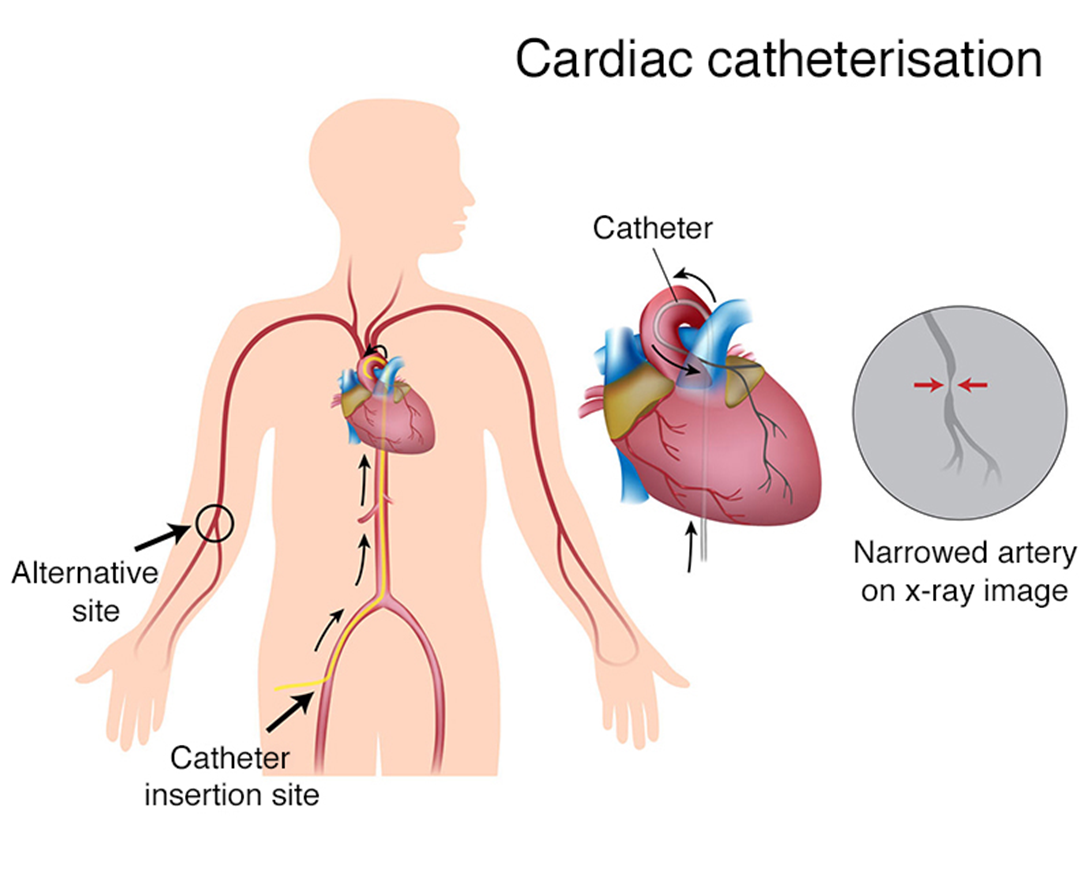A nurse is providing discharge instructions to the parent of a 10-year-old child following a cardiac catheterization. Which of the following instructions should the nurse include?
Offer the child clear liquids for the first 24 hours.
Assist the child to take a tub bath for the first 3 days.
Give the child acetaminophen for discomfort.
Keep the child home for 1 week.
The Correct Answer is C
Choice A reason: Offering the child clear liquids for the first 24 hours is not necessary, as the child can resume a normal diet after the procedure. Clear liquids are only recommended for the first few hours after the procedure to prevent nausea and vomiting.
Choice B reason: Assisting the child to take a tub bath for the first 3 days is not advised, as it can increase the risk of infection and bleeding at the catheter insertion site. The child should avoid tub baths, swimming, and soaking the site until it is completely healed, which may take up to a week.
Choice C reason: Giving the child acetaminophen for discomfort is appropriate, as it can relieve the pain and soreness at the catheter insertion site. The child should avoid aspirin and other nonsteroidal anti-inflammatory drugs (NSAIDs), as they can increase the risk of bleeding.

Choice D reason: Keeping the child home for 1 week is not required, as the child can resume normal activities within a few days after the procedure. The child should avoid strenuous activities, such as running, jumping, and biking, for at least 24 hours after the procedure.
Nursing Test Bank
Naxlex Comprehensive Predictor Exams
Related Questions
Correct Answer is D
Explanation
Choice A reason: This is not a correct instruction for the nurse to include in the teaching. The Pavlik harness is a device that holds the infant's hips in a flexed and abducted position to allow the femoral head to fit into the acetabulum. The harness should not be removed by the parents, as this may interfere with the treatment and cause complications. The nurse should instruct the parents to sponge bathe the infant while wearing the harness.
Choice B reason: This is not a correct instruction for the nurse to include in the teaching. The length of the straps of the Pavlik harness should not be adjusted by the parents, as this may affect the alignment and stability of the infant's hips. The nurse should instruct the parents to bring the infant to the provider's office regularly for check-ups and adjustments of the harness.
Choice C reason: This is not a correct instruction for the nurse to include in the teaching. Massaging the infant's skin under the straps of the Pavlik harness may cause irritation, friction, or pressure on the skin, which may lead to skin breakdown or infection. The nurse should instruct the parents to keep the infant's skin clean and dry, and to check for any signs of redness, swelling, or drainage.
Choice D reason: This is a correct instruction for the nurse to include in the teaching. Placing the diaper under the straps of the Pavlik harness prevents the diaper from interfering with the position and function of the harness. The nurse should instruct the parents to change the diaper frequently and to avoid using bulky or cloth diapers.
Correct Answer is D
Explanation
Choice A reason: Tetany is not a typical finding in an infant who is dehydrated. Tetany is a condition where the muscles contract involuntarily and cause spasms or cramps. It is usually caused by low calcium levels or alkalosis, not dehydration.
Choice B reason: Slow, bounding pulse is not a typical finding in an infant who is dehydrated. A slow, bounding pulse may indicate increased intracranial pressure or heart failure, not dehydration. A fast, weak pulse is more likely to occur in an infant who is dehydrated.
Choice C reason: Decreased temperature is not a typical finding in an infant who is dehydrated. A decreased temperature may indicate hypothermia or sepsis, not dehydration. A normal or slightly elevated temperature is more likely to occur in an infant who is dehydrated.
Choice D reason: Irritability is a typical finding in an infant who is dehydrated. Irritability indicates that the infant is uncomfortable and thirsty. It may also be a sign of cerebral dehydration, which can affect the infant's mental status and behavior.
Whether you are a student looking to ace your exams or a practicing nurse seeking to enhance your expertise , our nursing education contents will empower you with the confidence and competence to make a difference in the lives of patients and become a respected leader in the healthcare field.
Visit Naxlex, invest in your future and unlock endless possibilities with our unparalleled nursing education contents today
Report Wrong Answer on the Current Question
Do you disagree with the answer? If yes, what is your expected answer? Explain.
Kindly be descriptive with the issue you are facing.
